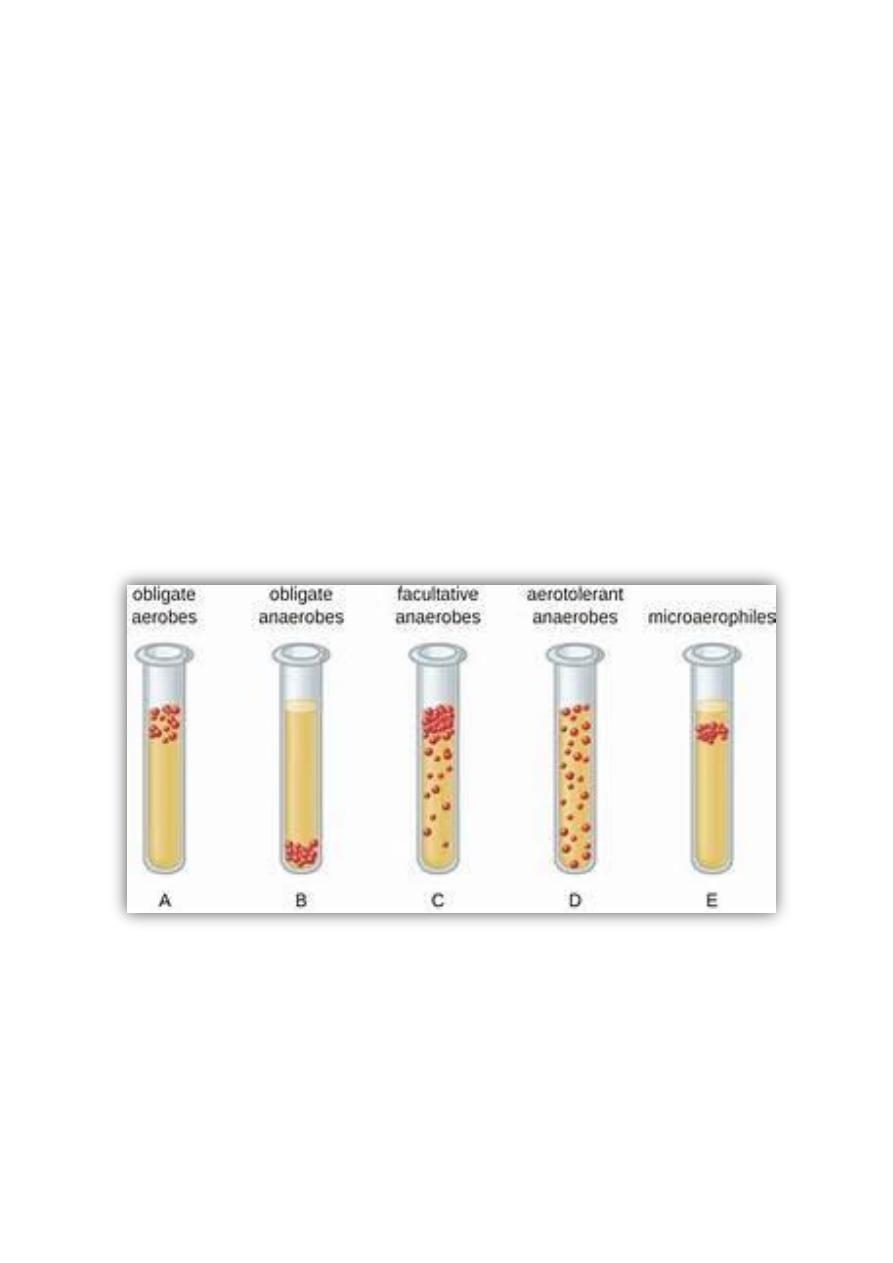
1
Course: Microbial Physiology
Lecturer: Dr. Weam Saad
Lecture: Microbial Nutrition
Nutritional Requirements of Cells
Every organism must find in its environment all of the substances required for
energy generation and cellular biosynthesis. The chemicals and elements of this
environment
that
are
used
for
bacterial
growth
are
referred
to
as nutrients or nutritional requirements. In the laboratory, bacteria can grow
in culture media which are designed to provide all the essential nutrients in
solution for bacterial growth.
The Major Elements
The cell's elements consists of C, H, O, N, S. P, K, Mg, Fe, Ca, Mn, and traces of
Zn, Co, Cu, and Mo. These elements are found in the form of water, inorganic
ions, small molecules, and macromolecules and are important because they play a
structural or functional role in the cells. Structural role when they are part of
cellular material and functional when they are part of metabolism and enzymes.
Carbon and Energy Sources for Bacterial Growth
In order to grow in nature or in the laboratory, all living organisms require a source
of energy. Organisms that use light energy (light) are called phototrophs.
Organisms that use (oxidize) an organic form of carbon are called heterotrophs or
chemo(hetero)trophs. Organisms that oxidize inorganic compounds are
called lithotrophs. Organisms that use organic carbon are heterotrophs and
organisms that use CO
2
as a sole source of carbon for growth are
called autotrophs.
All eukaryotes are either photoautotrophic (e.g. plants and algae) or heterotrophic
(e.g. animals, protozoa, fungi). Lithotrophy is limited with procaryotes and
photoheterotrophy, like Purple and Green Bacteria, occurs only in a very few
eukaryotic algae. Phototrophy are not found in the Archaea, except for non-
photosynthetic light-driven ATP synthesis in the extreme halophiles.

2
Major nutritional types of procaryotes
Nutritional Type
Energy Source
Carbon
Source
Examples
Photoautotrophs
Light
CO
2
Cyanobacteria, some
Purple
and
Green
Bacteria
Photoheterotrophs
Light
Organic
compounds
Some
Purple
and
Green Bacteria
Chemoautotrophs
or
Lithotrophs
(Lithoautotrophs)
Inorganic
compounds, e.g. H
2
,
NH
3
, NO
2
, H
2
S
CO
2
A few Bacteria and
many Archaea
Chemoheterotrophs
or
Heterotrophs
Organic compounds
Organic
compounds
Most Bacteria, some
Archaea
Growth Factors
Cells use carbon, either as organic carbon or CO
2
, and need small amounts of
certain organic compounds for growth because they are important substances and
the organism is unable to synthesize from available nutrients. Such compounds are
called Growth factors, they are three types:
1. Purines and pyrimidines: required for synthesis of nucleic acids (DNA and
RNA)
2.
Amino
acids:
required
for
the
synthesis
of
proteins
3. Vitamins: needed as coenzymes and functional groups of certain enzymes like
Vitamin K needed for Electron transport processes.
Some bacteria (e.g E. coli) do not require any growth factors: they can synthesize
all essential purines, pyrimidines, amino acids and vitamins as part of their own
metabolism. Certain other bacteria (e.g. Lactobacillus) require purines,
pyrimidines, vitamins and several amino acids in order to grow. These compounds
must be added in culture media that are used to grow these bacteria.

3
Culture Media for the Growth of Bacteria
The nutritional and biochemical environment that prepared to bacterial growth is
called a culture medium, and depend on the special needs of bacteria. Culture
media are employed in the isolation and maintenance of pure cultures of bacteria
and are also used for identification of bacteria according to their biochemical and
physiological properties.
The media differ according to the use:
1. Liquid media are used for growth of pure batch cultures.
2. Solid media are used for the isolation of pure cultures.
3. Semisolid medium is agar, produced from red algae. Agar is used because
of its espicial physical properties (it melts at 100 degrees and remains liquid
until cooled to 40 degrees and become ge;) and because it cannot be
metabolized by most gel.
Types of Culture Media
Culture media classified into types depending on the composition or use:
1. chemically-defined (synthetic) medium : the exact chemical composition
is known and composed of pure biochemical. The defined medium is
a minimal medium because it provides the exact nutrients only (including
growth factors) needed by the organism for growth.
2. A complex (undefined) medium the exact chemical composition of the
medium is not known and usually contain complex materials of biological
origin such as blood or milk or yeast extract or beef extract, provide the
growth factors that may be required by an organism so they are used to
cultivate unknown bacteria or bacteria of complex nutritional requirement
Most pathogenic bacteria of animals, which have adapted themselves to
growth in animal tissues, require complex media for their growth. E.g.
fastidious bacteria such as Treponema pallidum, the agent of syphilis,
and Mycobacterium leprae, the cause of leprosy

4
Culture media can be classified according to use into:
1. The selective medium is has a components added to the medium and will
inhibit or prevent the growth of certain types or species of bacteria and
promote the growth of desired species, also the physical conditions of
cultivation, such as increase or decrease pH and temperature is selective for
bacteria that are able to grow under these certain conditions.
2. The differential medium help to distinguish between different types of
bacteria due to different growth on the medium.
For example selective and differential medium is used for the isolation
of Staphylococcus aureus, the most common bacterial pathogen of humans,
contains a very high concentration of salt (which the staph will tolerate) that
inhibits most other bacteria, mannitol as a source of fermentable sugar, and a
pH indicator dye because this bacteria produce acid which reacts with the
indicator dye forming a color around the colonies
3. The enrichment medium contains some component that helps the growth
of specific types or species of bacteria, usually because only these bacteria
can utilize or use that component, for example, growth of the extreme
halophile (Halococcus) contains nearly 25% salt [NaCl], which is required
by the extreme halophile and which inhibits the growth of all other bacteria.
Physical and Environmental Requirements for Microbial Growth
They include O
2
concentration, Hydrogen ion concentration (pH) and temperature.
These requirements effect on the ability to grow and need a range of physical
conditions. A thermophile grows at high temperatures, an acidophil grows at low
pH, and the osmophil grows at high solute concentration.
The Effect of Oxygen
Oxygen is a need of all living cells and always provided in large amounts by H
2
O,
prokaryotes can be classified into:
A. Obligate aerobes require O
2
for growth; they use O
2
as a final electron
acceptor in aerobic respiration (e.g. Enteric bacteria) .

5
B. Obligate anaerobes (called aerophobes) do not need or use O
2
as a
nutrient, O
2
is a toxic substance for them, either kills or inhibits their
growth. Obligate anaerobic prokaryotes may live by fermentation,
anaerobic respiration, bacterial photosynthesis, or by the methanogenesis
process (e.g. Clostridia, Methanogens).
C. Facultative anaerobes (or facultative aerobes) are organisms that can
switch between aerobic and anaerobic types of metabolism. Under
anaerobic conditions (no O
2
) they grow by fermentation or anaerobic
respiration, but in the presence of O
2
they switch to aerobic respiration.
D. Aerotolerant anaerobes are bacteria with anaerobic type of metabolism
(fermentative), but they are insensitive to the presence of O
2
. They live
by fermentation alone O
2
is present or not in their environment (e.g.
Streptococci).
E. Microaerophils are bacteria that grow if O
2
levels are not too high
because they require low O
2
.
The different response of bacteria to O
2
in the environment depends on enzymes
which react with O
2
and oxygen radicals that are produced by cells in the presence
of O
2
. For example, oxidations of flavoproteins by O
2
result in the formation of
H
2
O
2
(Hydrogen peroxide) a very toxic free radical, also free radicals include
superoxide or O
2
.-
. In aerobic bacteria and aerotolerant anaerobes the toxic effects

6
for lethal superoxide is prevented by the enzyme superoxide dismutase. All
organisms which can live in the presence of O
2
contain superoxide dismutase.
Nearly all organisms contain the enzyme catalase, which decomposes H
2
O
2
, they
decompose H
2
O
2
by peroxidase enzymes which derive electrons from NADH
2
to
reduce peroxide to H
2
O. Obligate anaerobes do not have superoxide dismutase and
catalase or peroxidase.
All photosynthetic (and some nonphotosynthetic) organisms are protected from
lethal oxidations of oxygen radicals by their carotenoid pigments which physically
react with the singlet oxygen radical and turn it to nontoxic form.
The Effect of pH on Growth
The pH, or hydrogen ion concentration, [H
+
], in natural environments it is different
from the acidic soils to the alkaline lakes. Most free-living prokaryotes can grow
over a range of 3 pH units, the minimum pH, below which the organism cannot
grow, the maximum pH, above which the organism cannot grow, and
the optimum pH, at which the organism grows best, all these differences are
because of different rates of enzymatic reaction.
Microorganisms which grow at an optimum pH well below neutral pH=7.0, are
called
acidophilic.
Those
which
grow
best
at
neutral
pH
are
called neutrophilic and those that grow best under alkaline conditions are
called alkalophilic. Obligate acidophilus, like Thiobacillus species need a low pH
for growth because their membranes dissolve and the cells lyse at neutral pH.
Several genera of Archaea, including Sulfolobus and Thermoplasma, are obligate
acidophilic. In the eukaryotes, many fungi are acidophilic, but the
alga Cyanidium which can grow at a pH of 0.
In the use of culture media the optimum pH for growth of a bacteria is regulated
by buffers in order to maintain the pH of the medium in the changing of bacterial
waste products that accumulate during growth. The best media for the growth and
identification of human pathogens have a pH = 7.

7
Minimum, maximum and optimum pH for growth of certain procaryotes.
Organism
Minimum pH Optimum pH Maximum pH
Thiobacillus thiooxidans 0.5
2.0-2.8
4.0-6.0
Sulfolobus acidocaldarius 1.0
2.0-3.0
5.0
Lactobacillus acidophilus 4.0-4.6
5.8-6.6
6.8
Staphylococcus aureus
4.2
7.0-7.5
9.3
Escherichia coli
4.4
6.0-7.0
9.0
Clostridium sporogenes
5.0-5.8
6.0-7.6
8.5-9.0
Pseudomonas aeruginosa 5.6
6.6-7.0
8.0
Streptococcus pneumoniae 6.5
7.8
8.3
The Effect of Temperature on Growth
There is a wide range for prokaryotes in temperature of growth. For example,
bacteria that grow with an optimum temperature near 37 degrees (the body
temperature of warm-blood animals) are called mesophilic. Organisms grow
about 45 degrees and 70 degrees are thermophilic they have a high G + C content
in their DNA to increase the melting point of the DNA (the temperature at which
the strands of the double helix separate). Some Archaea grow in 80 degrees or
higher as 115 degrees are called extreme thermophilic or hyper-thermophilic,
they have especial proteins, enzymes and membrane that are stable in high
temperatures. The cold-loving organisms are psychrophilic they are able to grow
at 0 degrees they have large amounts of unsaturated fatty acids in their plasma
membranes, also have especial enzymes

8
Minimum, maximum and optimum temperature for growth of certain bacteria
and archaea.
Temperature for growth (degrees C)
Bacterium
Minimum Optimum Maximum
Listeria monocytogenes
1
30-37
45
Staphylococcus aureus
10
30-37
45
Escherichia coli
10
37
45
Streptococcus pyogenes
20
37
40
Streptococcus pneumoniae 25
37
42
Methanococcus jannaschii 60
85
90
Pyrobacterium brockii
80
102-105 115
Optimum growth temperature of some prokaryotes.
Genus and species
Optimal growth temp (degrees C)
Vibrio cholerae
18-37
Rhizobium leguminosarum 20
Streptomyces griseus
25
Pseudomonas fluorescens
25-30
Erwinia amylovora
27-30
Staphylococcus aureus
30-37
Escherichia coli
37
Mycobacterium tuberculosis 37
Pseudomonas aeruginosa
37
Streptococcus pyogenes
37

9
Hyperthermophilic Archaea.
Temperature for growth (degrees C)
Genus
Minimum Optimum Maximum Optimum pH
Sulfolobus
55
75-85
87
2-3
Methanothermus 60
83
88
6-7
Methanopyrus
85
100
110
7
Water Availability
Water is the solvent of the molecules of life they are dissolved in water so water
is important factor that affects the growth of all cells. Water presence in the
atmosphere is called (relative humidity) or its presence in solution or a substance
called (water activity). The water activity (A
w
) of pure H
2
O is 1.0 (100% water).
Water activity is affected by the presence of solutes such as salts or sugars that are
dissolved in the water. The higher the solute concentration of a substance, the
lower is the water activity and vice-versa.
The common solute in nature is salt [NaCl] solution, and microorganisms are
named based on their growth in that salt solution. Microorganisms that require
some NaCl for growth are halophiles. Mild halophiles require 1-6%
salt, moderate halophiles require 6-15% salt; extreme halophiles that require 15-
30% NaCl for growth are found among the archaea. Bacteria that are able to grow
at moderate salt concentrations, even though they grow best in the absence of
NaCl, are called halotolerant, the osmophiles are bacteria that are able to live in
environments of high sugar. Organisms which live in dry environments are called
xerophiles.
The concept of lowering water activity in order to prevent bacterial growth is the
basis for preservation of foods by drying (in sunlight or by evaporation) or by
addition of high concentrations of salt or sugar.

11
